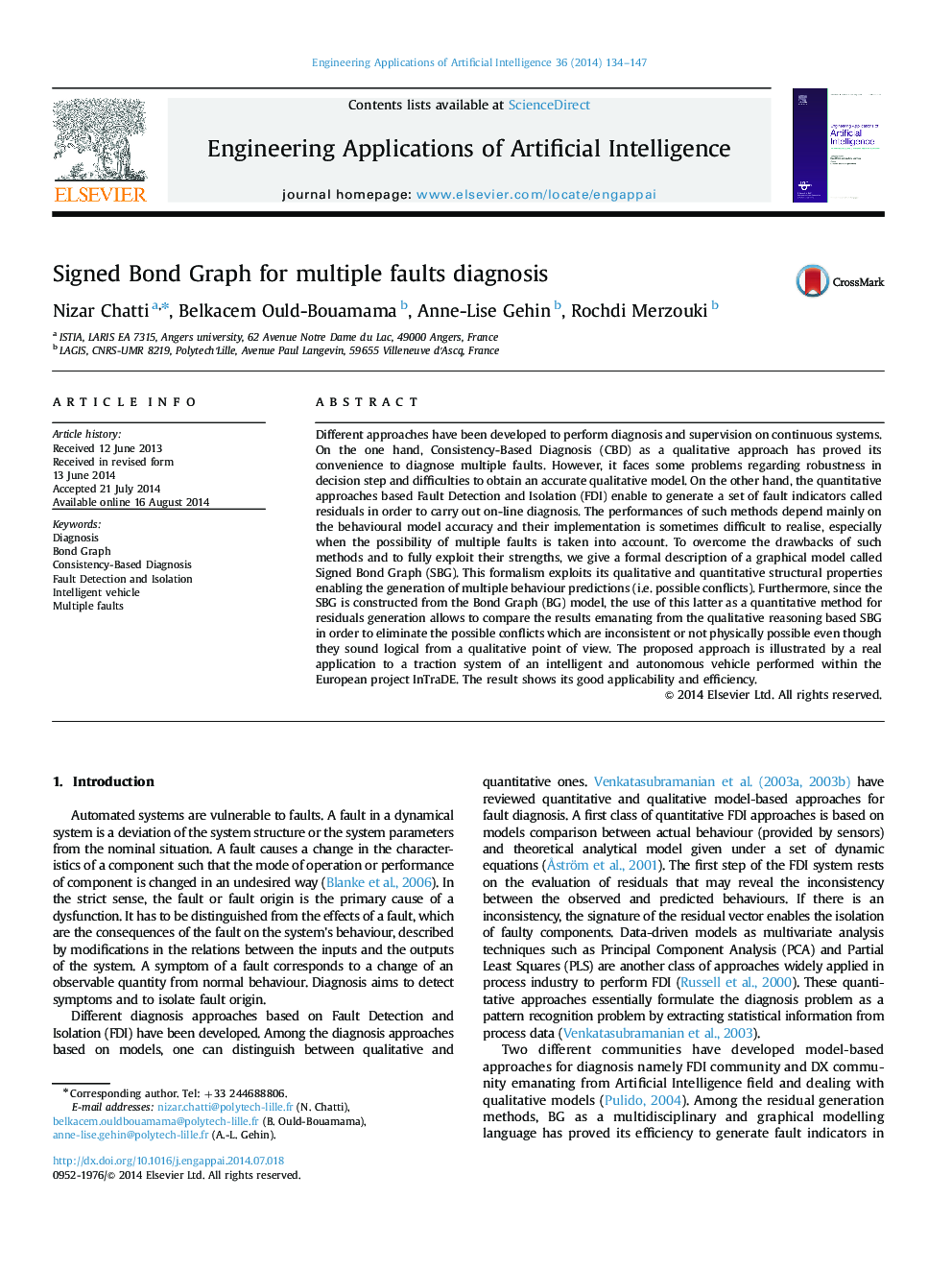| کد مقاله | کد نشریه | سال انتشار | مقاله انگلیسی | نسخه تمام متن |
|---|---|---|---|---|
| 380454 | 1437443 | 2014 | 14 صفحه PDF | دانلود رایگان |

Different approaches have been developed to perform diagnosis and supervision on continuous systems. On the one hand, Consistency-Based Diagnosis (CBD) as a qualitative approach has proved its convenience to diagnose multiple faults. However, it faces some problems regarding robustness in decision step and difficulties to obtain an accurate qualitative model. On the other hand, the quantitative approaches based Fault Detection and Isolation (FDI) enable to generate a set of fault indicators called residuals in order to carry out on-line diagnosis. The performances of such methods depend mainly on the behavioural model accuracy and their implementation is sometimes difficult to realise, especially when the possibility of multiple faults is taken into account. To overcome the drawbacks of such methods and to fully exploit their strengths, we give a formal description of a graphical model called Signed Bond Graph (SBG). This formalism exploits its qualitative and quantitative structural properties enabling the generation of multiple behaviour predictions (i.e. possible conflicts). Furthermore, since the SBG is constructed from the Bond Graph (BG) model, the use of this latter as a quantitative method for residuals generation allows to compare the results emanating from the qualitative reasoning based SBG in order to eliminate the possible conflicts which are inconsistent or not physically possible even though they sound logical from a qualitative point of view. The proposed approach is illustrated by a real application to a traction system of an intelligent and autonomous vehicle performed within the European project InTraDE. The result shows its good applicability and efficiency.
Journal: Engineering Applications of Artificial Intelligence - Volume 36, November 2014, Pages 134–147